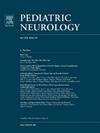Helmet Therapy for Positional Plagiocephaly: A Systematic Review of the Tools Used to Diagnose, Offer Treatment Recommendations, and Assess Treatment Outcomes of the Condition
IF 3.2
3区 医学
Q2 CLINICAL NEUROLOGY
引用次数: 0
Abstract
Background
Positional plagiocephaly (PP) is an asymmetric deformation of the skull as a consequence of external forces acting on a normal and pliable skull. The prevalence of PP ranges between 19.6% and 46.6%. Treatment options for PP include repositioning, physical therapy, and helmet orthoses. Consensus regarding the treatment of PP remains elusive due to the condition's imprecise natural history, dissimilar diagnostic strategies, and unreliable data asserting treatments' efficacy. Our aim was to conduct a systematic review of the tools used to diagnose, suggest treatment strategies, and assess outcomes for PP.
Methods
We used the Preferred Reporting Items for Systematic Reviews and Meta-Analyses guidelines to query a variety of databases. A total of 444 articles were imported into Covidence, a screening and data extraction tool for conducting systematic reviews.
Results
After a series of screenings, 60 articles met inclusion criteria and were reviewed in detail. The information was entered into a data extraction list consisting of 16 variables in the categories of general information, diagnostic strategies, treatment modalities, and treatment outcomes. Most articles reported retrospective case series, which yielded level 4 evidence. Only one article reported the results of a randomized and blinded outcomes assessment trial. Such article yielded level 1 evidence and was rated as high quality for allocation, concealment, and blinding of personnel.
Conclusion
The strategies used to diagnose and classify PP are a disparate list of measures most of which have no parallels making it impossible to offer treatment recommendations and generate generalizable knowledge.
头盔疗法治疗位置性头畸形:用于诊断、提供治疗建议和评估治疗效果的工具的系统性综述。
背景:位置性头盖骨畸形(PP)是由于外力作用于正常而柔韧的头盖骨所导致的头盖骨不对称变形。PP的发病率在19.6%至46.6%之间。PP 的治疗方法包括复位、物理治疗和头盔矫形器。由于PP的自然病史不精确、诊断策略各异、疗效数据不可靠,因此关于PP的治疗仍未达成共识。我们的目的是对用于诊断 PP、建议治疗策略和评估疗效的工具进行系统性回顾:我们使用《系统综述和元分析首选报告项目》指南查询了各种数据库。共有 444 篇文章被导入到 Covidence 中,Covidence 是一种用于进行系统综述的筛选和数据提取工具:经过一系列筛选,有 60 篇文章符合纳入标准,并进行了详细审查。相关信息被输入数据提取列表,该列表由一般信息、诊断策略、治疗方式和治疗结果等类别的 16 个变量组成。大多数文章报告了回顾性病例系列,获得了4级证据。只有一篇文章报告了随机和盲法结果评估试验的结果。这篇文章的证据等级为1级,在分配、隐藏和人员盲法方面被评为高质量:结论:用于诊断和分类 PP 的策略是一系列不同的测量方法,其中大多数都没有相似之处,因此无法提供治疗建议,也无法产生可推广的知识。
本文章由计算机程序翻译,如有差异,请以英文原文为准。
求助全文
约1分钟内获得全文
求助全文
来源期刊

Pediatric neurology
医学-临床神经学
CiteScore
4.80
自引率
2.60%
发文量
176
审稿时长
78 days
期刊介绍:
Pediatric Neurology publishes timely peer-reviewed clinical and research articles covering all aspects of the developing nervous system.
Pediatric Neurology features up-to-the-minute publication of the latest advances in the diagnosis, management, and treatment of pediatric neurologic disorders. The journal''s editor, E. Steve Roach, in conjunction with the team of Associate Editors, heads an internationally recognized editorial board, ensuring the most authoritative and extensive coverage of the field. Among the topics covered are: epilepsy, mitochondrial diseases, congenital malformations, chromosomopathies, peripheral neuropathies, perinatal and childhood stroke, cerebral palsy, as well as other diseases affecting the developing nervous system.
 求助内容:
求助内容: 应助结果提醒方式:
应助结果提醒方式:


